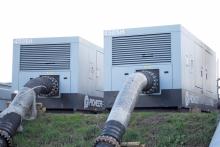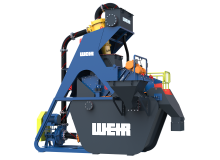
Atlantic Pumps is one of the leading global manufacturers and distributors of pumps designed for abrasive applications in the quarrying, mining and mineral processing industries. The company’s chief marketing officer, Bill Noakes, says the quarry is a challenging environment for pumps to work in.
“Water collects in quarries from both rainwater and groundwater seepage,” says Noakes. “Dewatering pumps are required to remove or reduce this water from the active parts of the quarry to allow mineral extraction to continue.”
Often, large volumes of water need moving over a long period of time. The water will often contain mud or abrasive aggregate particles. Electric power is not always available, and the quarry operator has to satisfy the planning and environmental agencies in relation to site discharge and noise, and also keep the neighbours onside.
Noakes says it is important for quarry operators to take care in correctly specifying the pumps as this will have a big impact on site operation and operating costs. He highlights the following as some of the factors that operators should consider.
Running costs make up a large proportion of the lifetime cost of a pump, with energy costs particularly significant. Electrical pumps can carry huge savings if heavily used in the same location and on-grid power is available. However, diesel power is usually best for mobile pumping solutions and where electrical power has to be generated on site.
Slurry pumps are designed with open clearances and replaceable liners. This allows solids to pass through the pump, and for wear parts to be replaced as necessary. By design they are of lower efficiency than water pumps. This means, if you are only pumping water, slurry pumps will be significantly more expensive to run over time. However, if you are pumping solids-laden liquids a slurry pump can be a good investment as it could last much longer than a water pump.
As the pump will be required to run for long periods, and is often located in remote locations, a reliable, easy to maintain pump will save you time and release labour for other tasks. Correct specification is important in reducing downtime.
The Atlantic Pumps Audex AD diesel dewatering pump sets, showcased at the recent Hillhead 2018 event at Tarmac’s Hillhead Quarry near Buxton, Derbyshire, England, are designed for quarry dewatering. They are available in 10.2centimetre, 15.2cm and 20.3cm discharge sizes, and can be converted to electric power if required.
It is virtually impossible to mine effectively in water and mud, according to Harvinder Bhabra, global dewatering product manager at Weir Minerals Europe which provides a range of pumps and equipment for dewatering operations. He says, therefore, that it is vital the ground is dry enough to allow excavation to take place safely, and to protect both the workforce and equipment.
Often, mining takes place in extremely challenging environments, where equipment is exposed to the wear and tear associated with the most rugged processes. Equipment used must be robust to withstand these processes, says Bhabra. He adds that the equipment must also be reliable, as unscheduled maintenance stops may affect the entire operation.
“The process of dewatering itself can be time consuming and expensive, therefore it is important to get more value from the water drawn out,” says Bhabra. “In environments where water is scarce, there is even more onus on recycling that water, rather than allowing it to go to waste. Each site and region is unique, and presents different challenges, so a one-size-fits-all approach is far from ideal.”
Responsible equipment suppliers will integrate with the wider environment of the mine, to help clients improve the overall operation of their site and make it more resilient against the backdrop of the increasingly difficult conditions in which many of their businesses operate.
Given the various and complex considerations, the process of planning a dewatering system is by necessity a lengthy and detailed one. Engineers must bear in mind several complex but vital factors which will affect the design of each individual plan.
Bhabra says it is essential to understand the different operating depths and existing piping systems as well as the depth of the water table, the permeability of the ground and the amount of surface water present. The presence of geological features such as rivers or underground water pockets in addition to seasonal variations must also be taken into account when drawing up a plan for fluid movement and transfer.
“The positioning and flow requirements of the pump systems must be mapped out, and water inflow rates calculated before a suitable dewatering system can be specified,” says Bhabra. “This must be created with a capability that exceeds the maximum requirements predicted to account for unforeseen circumstances such as a long period of intense rainfall.”
In fact, the weather can have a huge impact on dewatering systems. Melting ice and unusually heavy rainfall can significantly affect the amount of water entering a mine, especially at open pit sites, so any system must be able to cope with this to prevent safety issues and production delays.
Adaptability is vital as conditions can vary a great deal during the operating lifespan of a mine. When a new mine is excavated, work might take place just a few metres below ground level, but this can grow to a significant depth of hundreds of metres.
“Obviously, the same regime is unlikely to be suitable to handle such large variations in flow rates and many operations use several different pump stations as the work goes on,” says Bhabra. “The goal is to achieve a system capable of handling every potential challenge with reliability and efficiency.”
He adds that technology has helped greatly with this, with the advent of sophisticated devices such as programmable logic controllers to control pump speeds, and mechatronics systems to monitor equipment function – from flow rates and pressure to bearing monitoring – which optimises productivity and safety.
Weir Minerals Europe put together a total dewatering solution for Severočeské doly, the largest brown coal producer in the Czech Republic.
Excavating around 23million tonnes of coal a year, the company works two separate mines in the North Bohemian brown-coal basin, Tušimice and Bílina. The Bílina Mine produces low-sulphur sorted and power generation coal, while the Doly Nástup Tušimice operation – the Czech Republic’s biggest open cast mine – produces coal for power generation.
Poor performance at the Nástup mine was causing problems. A lack of automation resulted in it using hand-operated pump stations and locally-manufactured pumps unsuitable for the dewatering process. The pumps had no resistance to abrasion or corrosion, which resulted in a high turnover of equipment and consequently high operating costs.
Seeking a fully automated, reliable and efficient dewatering system, the operators turned to Weir Minerals, which was tasked with designing and implementing a full pump network.
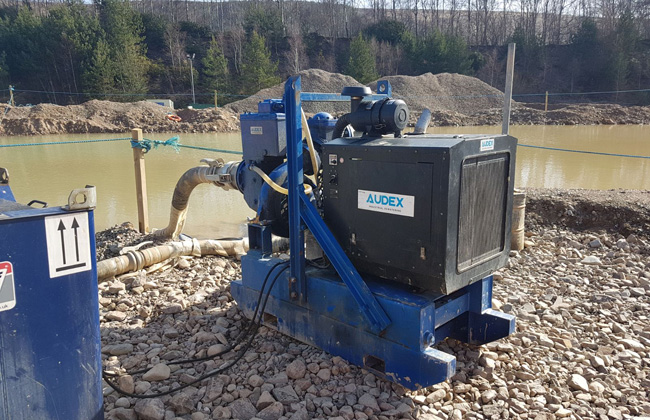
Working with Czech and Slovak engineers, the Weir Minerals team installed a system of 127 Warman pumps, with the aim of increasing equipment lifespan, improving reliability and reducing maintenance and operating costs.
The pumps were installed in 1992 and operated for 20 years without any wet-end replacement. The only parts they required over two decades were bearing assembly parts and spare elements for mechanical seals. The pumps used prior to 1992 had an average wear life of just 700 hours.
According to Weir Minerals, the new pumps enabled a substantial reduction in total cost ownership while significantly improving reliability.
Products used included floating, stationary, vertical and mobile pump units, all from the Warman range.
Online data transfer was switched to a central control room, to allow for easier monitoring of pump performance, breakdown evaluations and data processing.
Jan Hlavacek, head of Nástup Tušimice’s (DNT) MDW section, said: “Warman pumps are instrumental in the reliability of the mine dewatering system. The pumps’ sophisticated, robust design, high MPS and resistance are factors lowering the level of required maintenance. Pump design and performance allow parallel and serial pump connections that help in high geodetical head and long mine dewatering lines applications. Warman pumps facilitated fulfilling the conception – a fully automated, modern, easily operated, adaptable and highly reliable Nástup Tušimice mine dewatering system.”
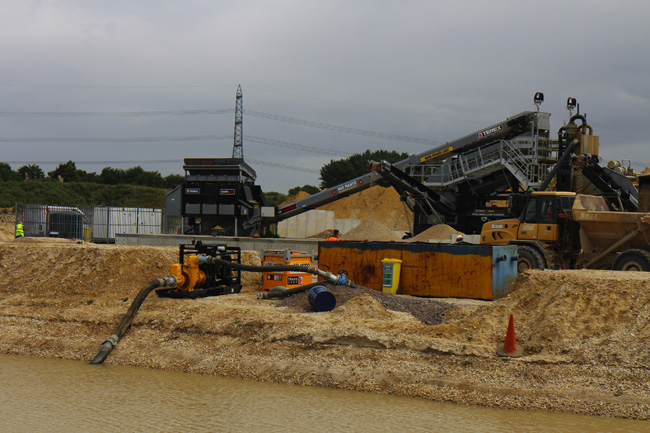
Selwood, another leading pump solutions provider, has introduced a new unit to its solids handling range for recycled aggregates, construction and quarrying applications. The S150M electric solids handling pump, which was also exhibited at Hillhead 2018, is a modified version of Selwood’s S150M diesel and features a 110Kw electric motor designed to be environmentally friendly.
The new model is being used by Mid Hants, a supplier of high-quality graded sand, gravel, and crushed rock products for the construction and agricultural markets. Operating from a network of strategically located quarries throughout the UK, the Hampshire, southern England-headquartered company required a reliable pump to meet the design of a new wash plant installation, with flows of 500m³/h at 5bar pressure for sand washing. The wash plant prepares sand for the purposes of bedding for cattle in the farming sector.
Selwood specialists carried out a detailed on-site assessment to determine the best pump for the operation and the S150M, with its medium-head capabilities, was chosen. A demonstration of the S150M diesel was carried out at 500m3/h @5bar and the tests were successful. Mid Hants opted to purchase the variant S150M unit, due to having electrical power supply on site and wanting to house the pump in a secure container.
Following the introduction of the S150M electric, Mid Hants now has a requirement for additional pumps, including the S200 to feed the main lagoon to the S150M Electric to supply water for the plant. A Selwood D150 Drainer pump is also required to take drainage water from the sand, as well as supplying the mains water to the lagoon.
“Customers in the construction and aggregates industry are increasingly seeking to reduce emissions and comply with even more stringent regulations,” said Paul Mann, director of UK and European business development at Selwood Pump Sales. “The S150M Electric has been developed in response to this demand for emission compliance without sacrificing the high performance our customers are accustomed to.”
Selwood is currently developing the S150M Electric Super Silent, which will feature the company’s sound attenuation technology.
The S150M Electric is designed to be suitable for both contractors and rental companies. It can achieve flow rates of up to 700m3/h and total heads of 70 metres with solids handlings of 76mm.
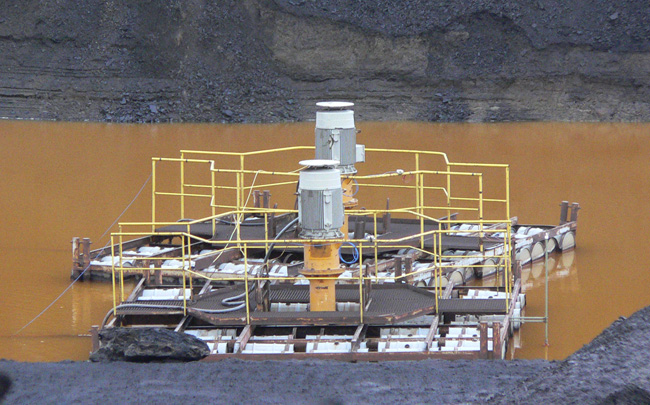
In March this year Atlas Copco announced it had expanded its PAS diesel-driven centrifugal pump range with the addition of 18 new models. Since then, the company says it has witnessed a positive response from the global quarrying and aggregates market, for which it says these technologies are ideally suited.
Wim Moors, vice president pumps from the Atlas Copco Power & Flow division, said: “Our PAS pumps are now well accepted and have proven their success in a number of different regions. For instance, in the USA we were the first to have a range completely integrated with reliable T4 Final engines. For this reason, and due to the wider technological advantages PAS pumps offer, we are now being recognised as a major player in the international dewatering industry. Many customers have expressed their interest in the latest products we introduced in March, as well as ones that are in the pipeline.”
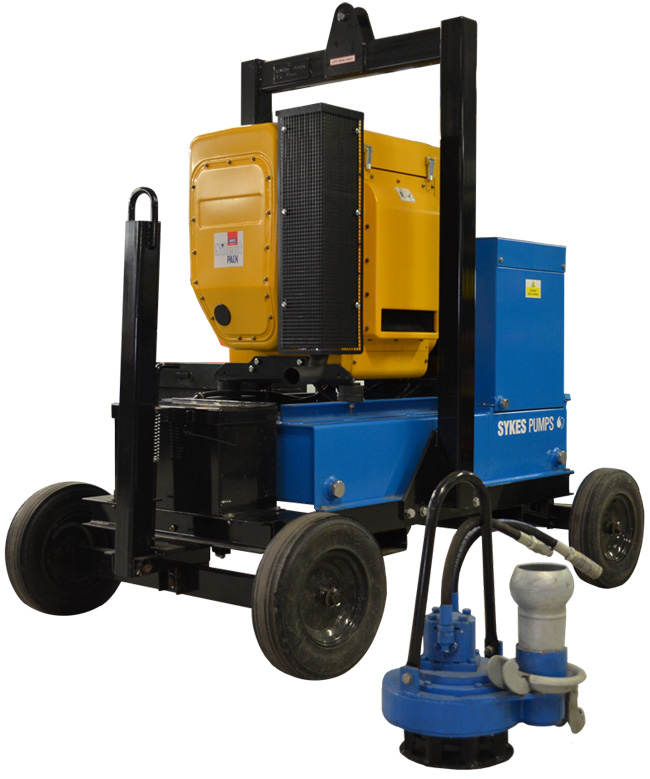
Pump hire specialist
Adding to the 10.2cm and 15.2cm hydraulic submersibles already available, the Hydraset 80 is available from all 25 depots across the company’s UK network. The pump comprises a power pack, pump end and a set of hydraulic hoses and can be quickly installed.
The 7.6cm Hydraset is suited for suction depths too great for standard surface mounted pumps to achieve. It provides an option for remote sites and locations where electricity is not available. The 7.6cm pump end enables easy access into small chambers and manholes and offers a maximum flow rate of 31l/s, a maximum head of 31m and a solids-handling capacity of 22mm.
Sykes says the pumps are suitable for 24/7 requirements, with an integrated fuel tank capacity of 145 litres. Fuel consumption is low at just five litres/hr at 1500rpm, enabling constant operation without refuelling for up to 29 hours.
“We have introduced the new pump as a direct response to customer demand for a compact hydraulic submersible that can offer a flexible, low-cost and high-efficiency solution for rapid deployment on site and we’re confident the 3 inch [7.6cm] model will become as popular as the larger alternatives within the range,” says Sykes sales director Chris Graham.


